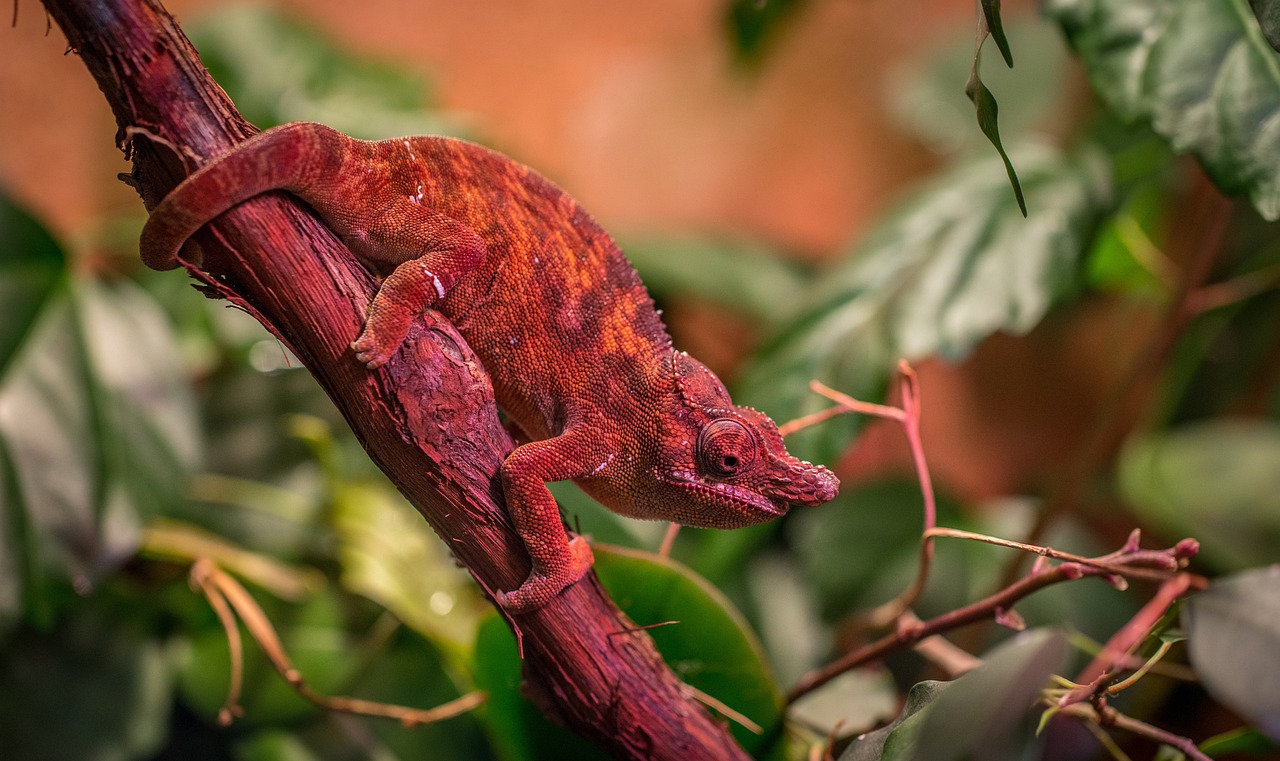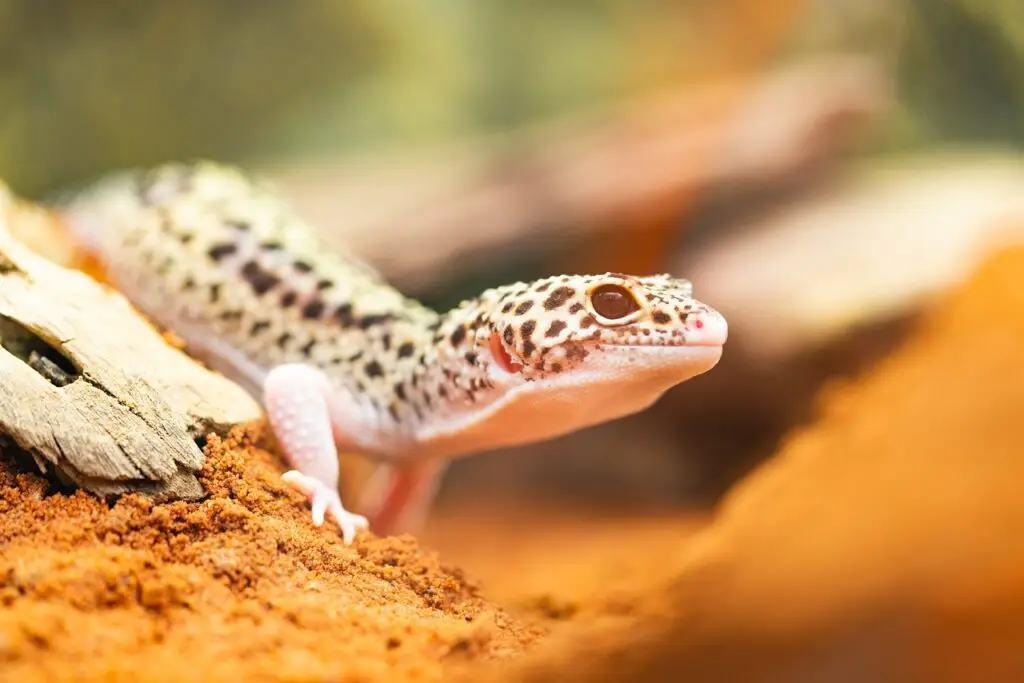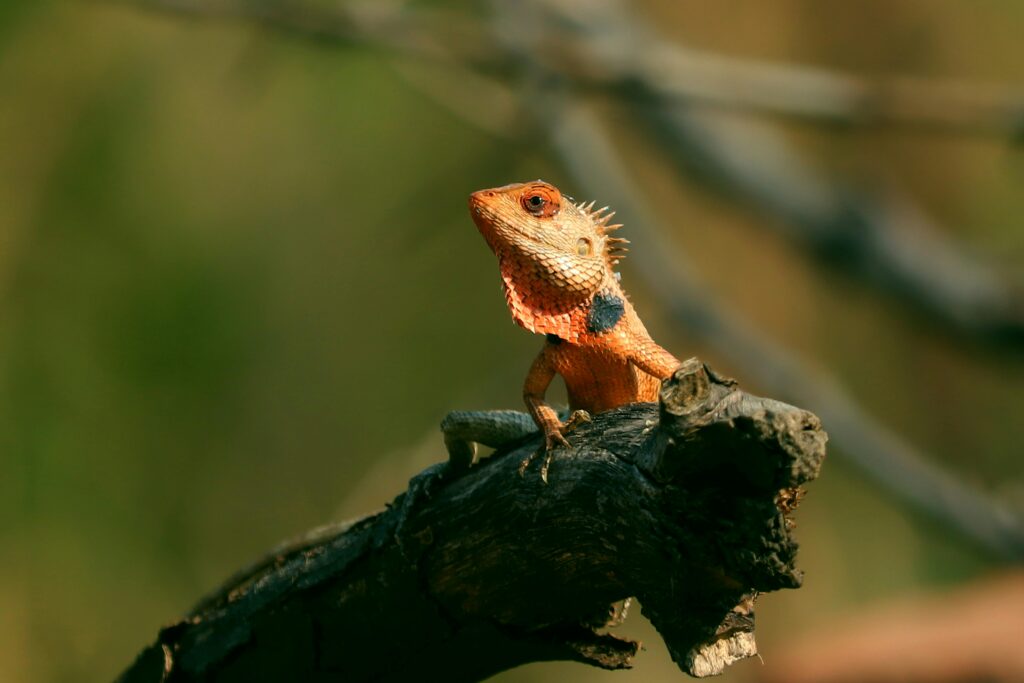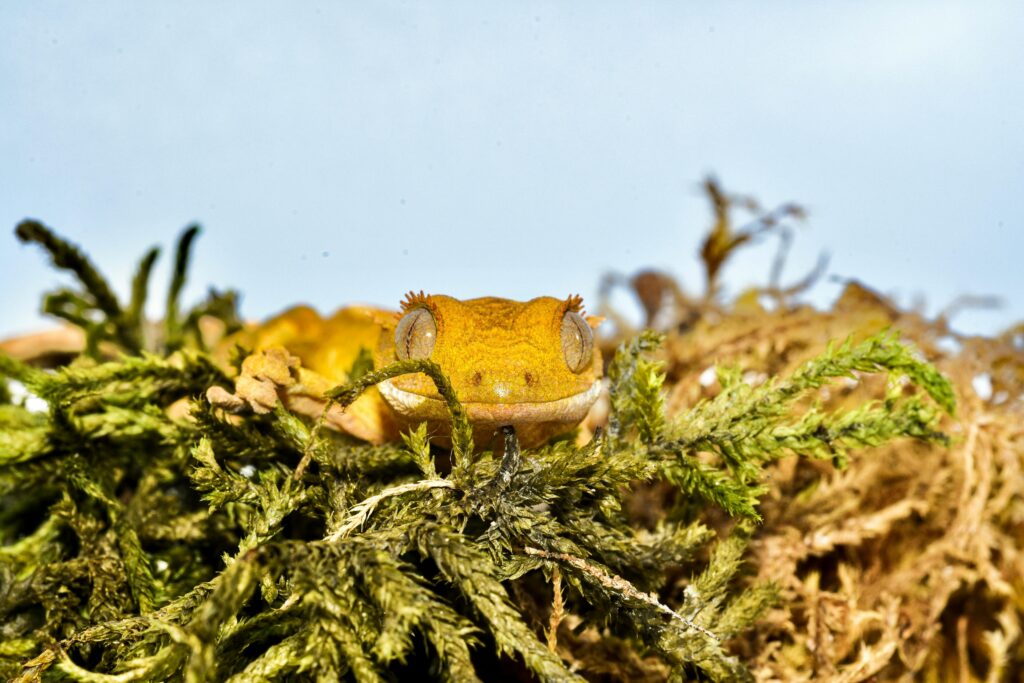Is a Chameleon a Reptile or an Amphibian?
Chameleons are among the most fascinating creatures in the animal kingdom, known for their incredible ability to change colors, unique zygodactylous feet, and independently moving eyes. Despite their popularity, a common question arises: Is a chameleon a reptile or an amphibian? To answer this, we need to explore the characteristics of both groups, delve into the biology of chameleons, and understand what makes them distinct.
Understanding Reptiles and Amphibians
Before identifying where chameleons fit, it’s important to understand the differences between reptiles and amphibians. These two classes of vertebrates share some similarities, but their differences are more pronounced when we look at their biology and evolutionary history.
Characteristics of Reptiles
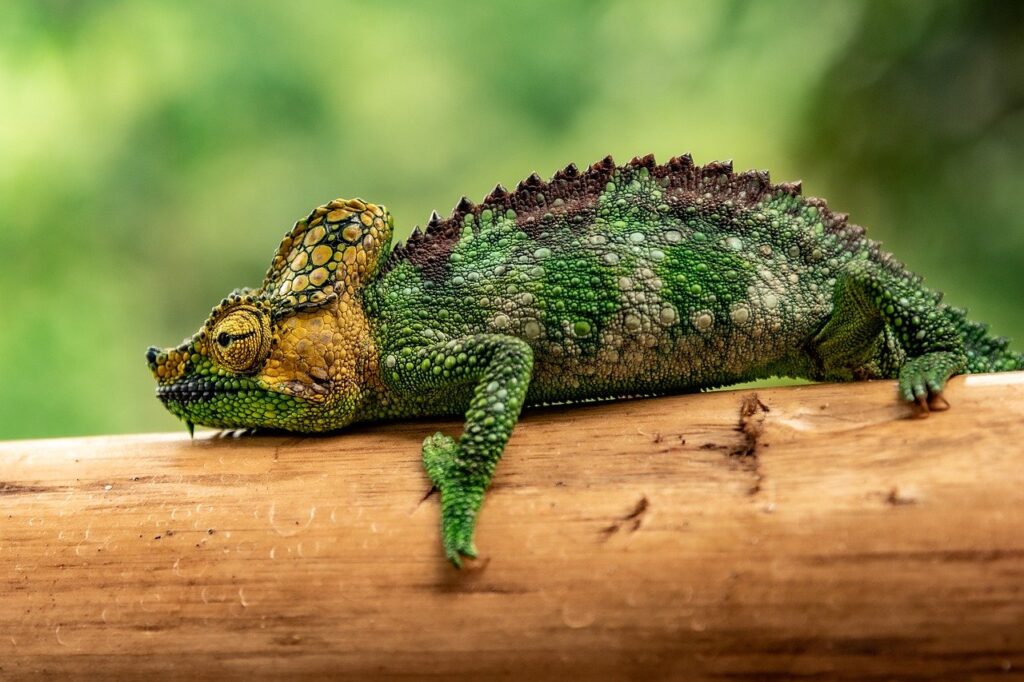
Image by Paul
Reptiles are cold-blooded vertebrates that belong to the class Reptilia. They are characterized by:
- Dry, scaly skin: Reptiles have tough, keratinized skin that reduces water loss, allowing them to live in dry environments.
- Egg-laying: Most reptiles lay eggs with leathery or hard shells, adapted for terrestrial environments.
- Lungs for breathing: Reptiles rely solely on lungs for respiration throughout their life.
- Ectothermy: They regulate body temperature through external sources like sunlight.
- Examples: Snakes, lizards, turtles, and crocodiles.
Characteristics of Amphibians
Amphibians belong to the class Amphibia and are known for their dual life stages (aquatic and terrestrial). Key traits include:
- Moist, permeable skin: Amphibians have skin that can absorb water and oxygen, making them dependent on moist environments.
- Life cycle: They often undergo metamorphosis, transitioning from water-dwelling larvae with gills to land-dwelling adults with lungs.
- Eggs in water: Amphibian eggs lack shells and are typically laid in water.
- Examples: Frogs, toads, salamanders, and newts.
Chameleons: The Reptilian Identity
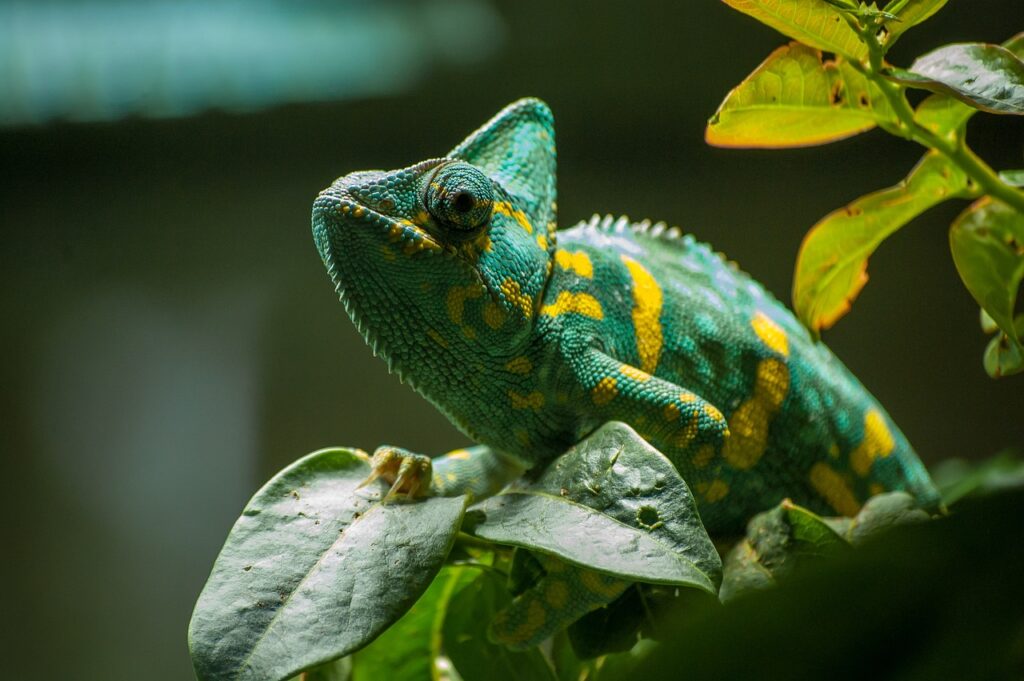
Chameleons are one of the most interesting reptiles, epitomizing the diversity and adaptability of the class Reptilia. They belong to the order Squamata, family Chamaeleonidae, and are generally arboreal with some amazing physical and behavioral adaptations. Following are their distinguishing features in detail:
Dry, Scaly Skin
- Structure and Function:
- The skin of the chameleon is keratinized, containing small, tough scales.
It reduces water loss, allowing them to exist in habitats from rainforests to semi-arid savannas.
- Adaptation:
- The skin is not only a barrier to dehydration but also plays a major role in camouflage and signaling through its color-changing ability.
Egg-Laying (Oviparity and Ovoviviparity)
- Reproduction:
- Most chameleons are oviparous, laying eggs with a leathery shell that protects against desiccation.
- Certain species, such as the Jackson’s chameleon, are ovoviviparous, giving birth to live young.
- Lifecycle Insight:
- Female chameleons often dig burrows to deposit their eggs, ensuring protection from predators and environmental extremes.
Respiratory System
- Lung-based Respiration:
- Like all reptiles, chameleons depend exclusively on lungs for the exchange of gases.
- They lack the moist, permeable skin used for respiration in amphibians, underscoring their adaptation to terrestrial life.
Ectothermic Nature
- Temperature Regulation:
- Chameleons depend upon external sources of heat for the regulation of body temperature.
- They bask in sunlight to heat up and move to shade or lighten color to cool off.
Unique Reptilian Specializations
- **Zygodactylous Feet: **
- Chameleons possess characteristic feet with two toes fused into opposing groups, forming a “clamp” perfectly suited for grasping branches.
- This structure is highly specialized for an arboreal lifestyle.
- Prehensile Tails:
- Their tails serve as a fifth limb, providing support, balance, and enhancing agility during locomotion through trees.
- Color-changing Ability:
- Chameleons possess layers of special skin cells:
- Chromatophores contain the pigments red and yellow.
- Iridophores reflect light to show the colors blue and white.
- These cells allow chameleons to change color for camouflage, thermoregulation, or communication.
Additional Features Unique to Chameleons
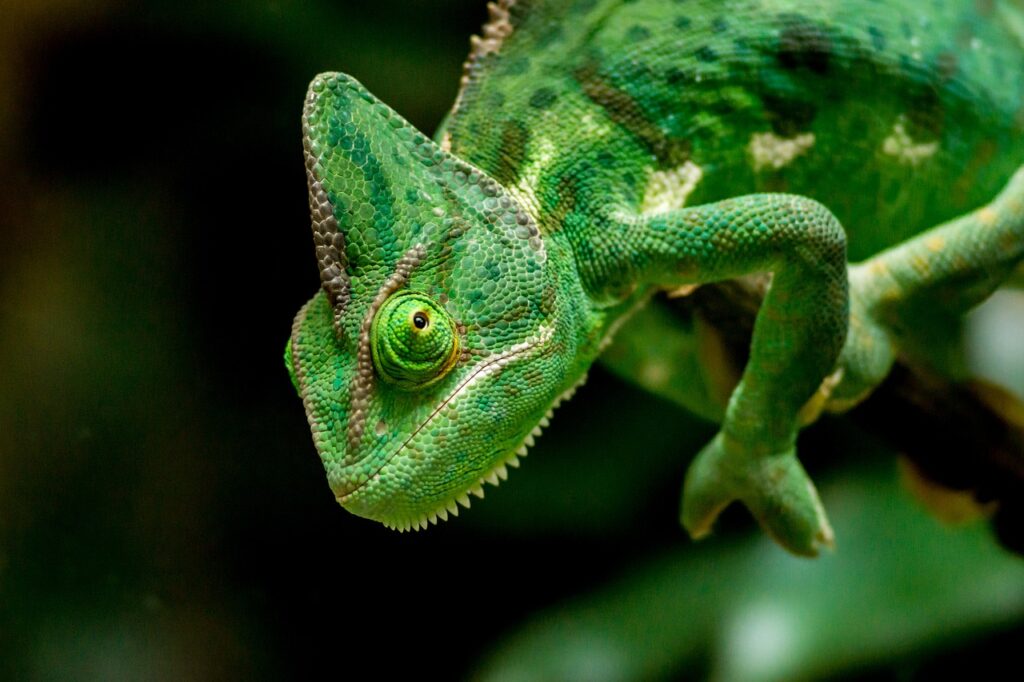
Independent Eye Movement:
- Each eye moves independently, giving chameleons a 360-degree field of vision to spot prey or predators.
Projectile Tongues:
- Their highly elastic tongues can be shot out with speed to catch insects with great precision, indicative of their predatorial skills.
Habitat and Behavior
- Chameleons are mainly found in Africa and Madagascar, although their distribution spreads to parts of Asia and Southern Europe.
- Their arboreal nature is reflected in their morphological structures, while a few species are ground-dwelling.
Would you like more information on the behavioral aspects of chameleons, different species, or their ecological role?
Common Misconceptions About Chameleons
Chameleons, like most reptiles, can often have traits that get them confused with amphibians. Let’s get rid of some misconceptions regarding their main differences and some special features of these species:
1. Dependence on Moisture
- The Misconception:
- Many may believe chameleons are amphibians since they seem to require water to survive.
- The Truth:
Chameleons are reptiles and do not depend on bodies of water to continue their life cycle. While depending on dew, rain, and mist for their hydration, they are adapted to survive in dry environments without being tied to water for reproduction. In most conditions, amphibians usually need water or moist for their eggs and larval stages.
2. Arboreal Lifestyle
- The Myth:
- The fact that chameleons are arboreal-they climb trees very much like tree frogs-led to beliefs that they were similar in biology.
- Reality:
- The adaptations of chameleons are uniquely reptilian:
- Zygodactylous feet with opposable toes that provide a firm grip on branches.
- Prehensile tails act almost like an additional limb, helping in balancing and support on trees.
- Amphibians, such as tree frogs, do not possess such structural modifications, relying on sticky pads for climbing and are far less specialized for prolonged arboreal life.
3. Egg-Laying Habits
- The Misconception:
- Chameleons have often been mistakenly thought to have amphibian reproduction because of their terrestrial habits.
- The Fact:
- Chameleons lay eggs in burrows or loose soil on land.
Their eggs are protected by tough, leathery shells to withstand dry conditions, unlike the gelatinous eggs of amphibians, which must remain moist and are often laid in water. - The species include some, like Jackson’s chameleon, showing viviparity, absent in amphibians.
Other Points of Distinction
- Respiration:
- Chameleons respire with the help of only lungs, but amphibians are able to respire through both their skin and lungs.
- Skin Characteristics:
- Chameleons have dry, scaly skin, while the skin of amphibians is smooth and permeable, aiding in the absorption of water and respiration.
Habitat and Lifecycle:
Mostly, amphibians have a two-phase life, that is, aquatic larvae and terrestrial adults, while all the stages of a chameleon’s life are purely terrestrial.
FAQs About Chameleons
Q1. Why are chameleons considered reptiles?
Chameleons have dry, scaly skin, lay shelled eggs, and rely on lungs for breathing. These traits align with reptiles, not amphibians.
Q2. Can chameleons live in water?
No, chameleons are terrestrial and arboreal reptiles. They cannot live in water or breathe through their skin like amphibians.
Q3. How do chameleons differ from amphibians?
Key differences include their dry, scaly skin (amphibians have moist skin), egg-laying practices (shelled eggs vs. unshelled), and respiratory methods (lungs only vs. skin and lungs).
Q4. Do chameleons need water?
Yes, but they drink water from droplets on leaves or dew. Unlike amphibians, they do not rely on water for their life cycle.
Q5. Are chameleons closely related to frogs?
No, chameleons are more closely related to other reptiles like lizards and snakes. Frogs belong to the amphibian class.
Q6. What makes chameleons unique among reptiles?
Their color-changing ability, zygodactylous feet, independently moving eyes, and prehensile tails are features that set chameleons apart.
Conclusion
Chameleons are undoubtedly reptiles, sharing core characteristics with other members of this class. While their arboreal lifestyle and moisture needs might lead to confusion with amphibians, their biology and adaptations clearly place them within the reptilian group. Understanding the differences between reptiles and amphibians not only clarifies chameleons’ classification but also deepens our appreciation for the diversity of life on Earth. Whether you’re a reptile enthusiast or a casual observer, chameleons continue to captivate with their extraordinary traits and behaviors.
Yuns Legdm is a passionate advocate for pet care and the founder of this website, dedicated to providing valuable information for fellow pet lovers and veterinary professionals worldwide. With a deep love for animals, Yuns created this platform to connect passionate pet owners with expert insights from veterinarians around the globe.
This website grows with you—the passionate pet owners and veterinary experts—creating a trusted space where knowledge, experience, and love for animals come together. Whether you’re seeking advice on pet health, nutrition, or general well-being, this platform is here to support you on your journey of responsible and loving pet care.

